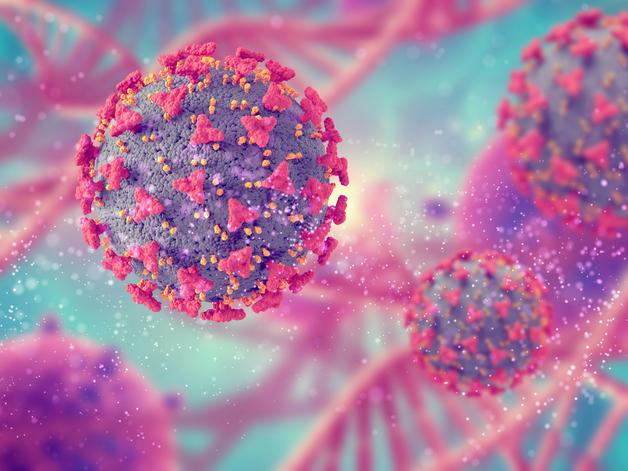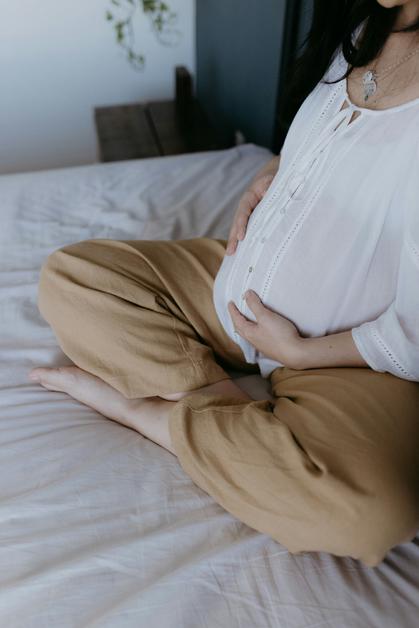Expecting a baby and suddenly craving that perfect maki or nigiri? The topic of sushi pregnancy stirs a landscape of curiosity—and caution. Uncertainty seeps in: Is every morsel dangerous? Is there a way to safely relish beloved flavours without putting your health, or your baby’s wellbeing, in jeopardy? Medical advice swirls, family worries gather like clouds, and meanwhile, that distinct taste of fresh sushi hovers in many minds. What if rolls with grilled salmon could be safe, but the spicy tuna was off limits? Let’s dive into the medical details, separate fact from folklore, explore practical tips, and empower parents to make thoughtful choices during the unique journey of pregnancy.
Sushi pregnancy: Core issues parents must weigh
Sushi pregnancy brings a cascade of concerns—some grounded in science, others more myth than medicine. The main dilemma? Traditional sushi often features raw fish. Here’s where things get more complex than a simple yes or no:
- Raw fish carries infectious agents: Listeria monocytogenes (a bacterium that can cause listeriosis), Anisakis parasites, Salmonella, and E. coli can all be lurking. These don’t just cause a passing stomach ache—especially during pregnancy—they may trigger complications like miscarriage, preterm labour, or serious infections for the foetus.
- Chemical hazards are present: Certain species like tuna or swordfish absorb mercury and heavy metals. These contaminants, invisible but omnipresent, cross the placenta and carry potential risks for your baby’s developing brain and nervous system.
- Vegetarian and homemade sushi: Seemingly harm-free, but even rolls with only vegetables can pose problems if ingredients aren’t washed properly, introducing bacteria or parasites, or triggering toxoplasmosis (even though this is rare from fish, it can linger on unwashed veggies or utensils).
These challenging aspects, central to the conversation around sushi pregnancy, mean every bite requires a second look.
Medical risks and scientific insights: What research teaches us about sushi pregnancy
Raw fish: Where invisible pathogens may lurk
Raw fish—think salmon sashimi, tuna nigiri—offers a set of risks often underestimated. Listeria monocytogenes is particularly concerning. Why? It can survive in the cold, multiply in the fridge, and cross the placenta, leading to outcomes such as miscarriage, neonatal infection, or even stillbirth. Freezing fish at -20°C (for at least seven days) destroys Anisakis larvae, yet not every establishment follows this protocol rigorously, and home freezers may not always reach that temperature.
So, sushi pregnancy is tied to questions like: Can cooking make it safe? Thoroughly cooked seafood—shrimp tempura, grilled salmon, or tamago (Japanese omelette)—shifts the balance. Cooking destroys bacteria and parasites, offering peace of mind for many parents.
Bacterial threats from the sushi board
Contamination isn’t confined to raw fish. Salmonella, E. coli and even Staphylococcus can invade through poor preparation, dirty hands, or questionable freshness. For parents, the outcome can be anything from rapid-onset gastroenteritis to more lingering digestive upsets requiring medical care. Clean kitchen practices, only using certified ingredients, and prompt refrigeration become non-negotiable in sushi pregnancy.
Toxoplasmosis: Not always about the fish
While the parasite causing toxoplasmosis rarely comes from fish, it haunts the surfaces of raw vegetables and undercooked meat. If your immunity is lacking, as detected in early maternity bloodwork, even a lapse in washing an avocado or cucumber can create unwanted complications.
Heavy metals, mercury, and sushi pregnancy
Here’s a subtle, yet serious, aspect: Mercury accumulates in predatory fish—bigeye tuna, king mackerel, swordfish, tilefish, shark. These sounds familiar as sushi favourites, but the reality is sobering. Even if the fish is cooked, mercury persists, sliding past your culinary defences to reach the foetus via the placenta. Limiting or excluding such species is a thoughtful decision for the entire pregnancy.
Safe and satisfying: How to enjoy sushi pregnancy with peace of mind
Switch to cooked fish and alternative sushi options
Let’s get practical: Grilled salmon nigiri, cooked shrimp rolls, flame-seared unagi (eel), or tamago—these exemplify a safer sushi pregnancy experience. No more tension with each bite. Cooked seafood wipes out most microbes and parasites. Still, don’t ignore the species—choose fish known for low mercury content: salmon, sardine, trout. Cooking is powerful, but not a shield against mercury.
Embrace vegetarian and imaginative alternatives
Who says sushi pregnancy equals dull meals? Vegetarian maki with avocado, cucumber, sweet potato; tofu rolls; or surimi (imitation crab)—mostly made from low-mercury fish—combine taste with safety. Some even experiment with cooked chicken maki or well-cooked seafood, but thorough hygiene is key. For those who crave the ritual more than the rawness, creative substitutes open a spectrum of new flavours.
Home-made sushi: Safety begins in your kitchen
Imagine controlling every variable. Home-prepared sushi can be a comforting solution, provided you:
- Buy only fish that’s been previously frozen according to strict parasite-control guidelines
- Wash fruits and vegetables scrupulously, peel where possible
- Disinfect all kitchen tools and surfaces before and after
- Focus on spreads like avocado maki, omelette rolls, or flame-grilled fish
Ordering out? Restaurant sushi and what to ask
Not every restaurant deserves your trust during sushi pregnancy. Don’t hesitate to ask pointed questions: Was the fish frozen according to guidelines for parasite destruction? Is the tuna fully cooked? How fresh are the vegetables? Transparency signals professionalism, while evasive answers should raise an eyebrow. Trust, but verify—your health, and that of your future baby, is reason enough.
Sushi pregnancy and nutrition: Untangling the medical benefits
Let’s set aside the risks for a moment—delve into the potent nutritional gifts of a well-chosen sushi pregnancy experience:
- Omega-3 fatty acids: Essential for the baby’s brain, eye, and vision development; prevalent in cooked salmon, trout, and sardines.
- Protein: Reliable and high quality, supporting foetal growth, muscle, and tissue building.
- Iodine: From fish and nori seaweed, vital for proper thyroid and neurological maturation.
- Complex carbohydrates: Sushi rice offers a steady energy release, avoiding wild sugar swings.
- Minerals and vitamins: Think iron, calcium, B-group vitamins, and vitamin D—which all support both mother and baby.
Keep an eye on nori: While it’s a powerhouse of iodine, excessive amounts can disrupt thyroid function. Moderation, as always, is the gold standard.
Sodium and sauces: Hidden hazards in the condiments
Soy sauce, pickled ginger, miso dressings—delightful but salt-laden. Excess sodium puts undue strain on pregnancy’s fluid balance. Opt for low-salt versions and rein in the urge for extra splashes. Beware of unpasteurized sauces or raw egg-based mayonnaise, which carry Salmonella or Listeria risks. Best to play it safe.
Sushi types and ingredients best left aside during pregnancy
Certain sushi creations simply don’t belong in a sushi pregnancy:
- All varieties of raw fish: Sashimi, raw tuna, spicy salmon, etc.
- High-mercury fish: Bigeye tuna, swordfish, shark, king mackerel, tilefish
- Sushi featuring unpasteurized sauces or raw eggs
- Pre-packed sushi or items where freshness and hygiene are uncertain
Practical reminders for choosing and preparing sushi during pregnancy
- Favour establishments famous for cleanliness, food safety, and traceable sourcing.
- Directly question staff about freezing, freshness, and handling. Precise answers inspire confidence; vagueness is a red flag.
- If crafting sushi at home, handle cooked and raw items separately.
- Chill sushi; never let it stand at room temperature beyond short windows.
- Meticulous hand and surface washing—nobody ever regrets it.
- Use condiments sparingly; sodium sneaks in where you least expect it.
- Cook fish thoroughly or ensure proper freezing for anything served cold.
- When in doubt, put baby first and rewrite the menu if necessary.
Cultural context and myths: Between Japan and beyond
You’ve probably come across the myth that Japanese women universally shun sushi pregnancy. Not quite! Many continue to enjoy sushi—cautiously, with an emphasis on cooked or frozen fish, and in settings with strict inspection norms. Food safety standards differ globally; health authorities in some regions advise more caution because risks from parasites or handling are not uniform everywhere. Rely on local recommendations and credible health advice from medical professionals attuned to your situation.
Key Takeaways
- Raw fish and high-mercury species should be thoroughly avoided during sushi pregnancy to reduce microbial and chemical exposures.
- Cooked fish- or vegetarian-based sushi can be both safe and delicious, provided kitchen hygiene and fish selection are rigorously respected.
- Never hesitate to question restaurant standards—water-tight hygiene and clear answers reinforce trust.
- The right sushi pregnancy choices are packed with omega-3s, protein, iodine, and vital minerals.
- Keep nori intake moderate to sidestep excessive iodine.
- Manage salt carefully and bypass sauces or garnishes with hidden risks.
- Medical professionals are resources worth consulting—timely advice outshines unnecessary anxiety.
- Each pregnancy brings its own realities—sushi pregnancy can be part of the journey with a balance of joy and caution.
For ongoing support, reliable advice, and personalised health questionnaires for your child, download the application Heloa—a trusted ally for every parent navigating wellness.
Questions Parents Ask
Can you eat sushi from the supermarket during pregnancy?
This is a top concern for many during sushi pregnancy. Packaged sushi, waiting in supermarket fridges for hours, poses questions about freshness and safe temperatures. Choose only those rolls made with cooked seafood like shrimp, crab, or vegetarian options, and always confirm that they’ve been kept under 5°C (41°F). Check packaging or expiry labels closely—if in doubt, opt for freshly prepared sushi from a reputable source or make it at home to lessen risks.
What signs should one watch for after accidentally having raw sushi during pregnancy?
Sometimes, raw sushi might be eaten by mistake in pregnancy—perhaps a casual slip at a gathering or from unclear restaurant labelling. Usually, there are no immediate effects. However, keep an eye out for symptoms like stomach pain, fever, vomiting, or diarrhoea over the following days. These could suggest a foodborne infection. If these arise, consult a healthcare professional without delay—they can provide reassurance and care, guiding you promptly.
Is it safe to eat sushi rice during pregnancy?
Sushi rice, by itself, doesn’t bring unique risks as long as it’s been prepared and stored correctly. Problems appear when rice stands at room temperature too long; in such cases, bacteria can multiply quickly. Enjoy rice that’s fresh or from outlets known for excellent hygiene, or prepare it at home for peace of mind.
With careful choices, clear information, and medical guidance, sushi pregnancy transforms from a source of worry into a satisfying and even nourishing culinary moment.
Further reading:









